Try These Helicopter Tricks
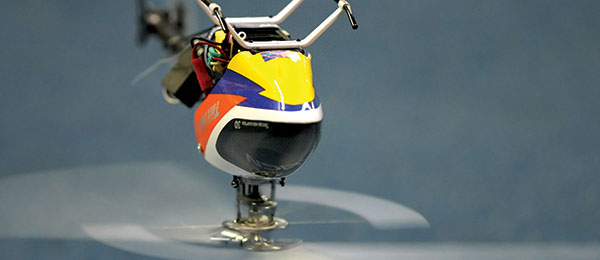
Written by Mark Fadely Radio Control Helicopters Column As seen in the October 2011 issue of Model Aviation.
Hello all, and thanks for checking out this month’s RC helicopter column. The outdoor flying season is nearing its end for much of the country, and smaller, indoor models will be logging most of the flight hours from now on. It is a good time to reflect on your successes and failures with helis during 2011. Did you accomplish what you had in mind for the year? Did you have a special goal that you attained, or are you happy just enjoying being involved in the hobby? Pilots are continually learning new maneuvers while perfecting the ones they already know. For those who are curious about new tricks, here is a list and brief description of RC helicopter stunts that are slightly complex:
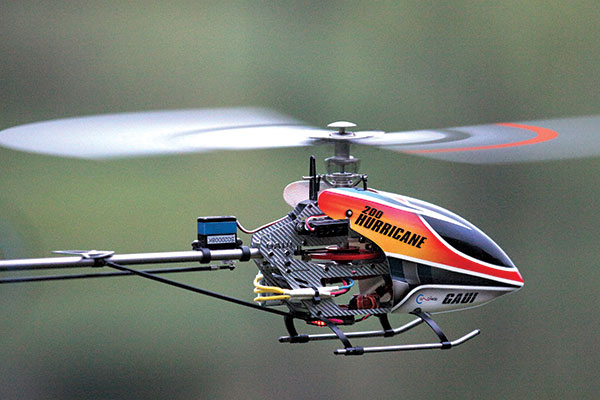
This is Blake McBrayer’s flybarless Gaui 255 model. Thecompany was one of the early developers of micro flybarless heads. This little heli flew over water and proved to be stable in all flight attitudes.
• Funnel—Sometimes called a pie dish, it is a circle flown sideways, either nose-up or nosedown. Getting the heli’s fuselage as vertical as possible makes this move difficult, but exciting. • Death Spiral—At altitude, the heli is put on its side with the fuselage parallel to the ground. Then, collective pitch is zeroed and forward- or backward-elevator is held, causing the heli to fall on its side while flipping forward or back. Don’t forget the pull-out. • Tic-Toc can be done with either aileron or elevator control. The helicopter cycles between a 10-o’clock and 2-o’clock fuselage position, with negative and positive collective pumps and cyclic control. Imagine a seesaw in a more vertical position. • Pirouetting flip—The heli’s tail spins while it executes a flip. You must stir the cyclic stick to properly execute this maneuver. • Chaos is a pirouetting flip that changes the nose orientation with each flip. • Pirouetting globe—Consecutive loops while pirouetting and changing flight paths on each loop to simulate a globe. • Tail slide—The helicopter is at a higher altitude when the nose is pulled up so the fuselage is perpendicular to the ground, and then the collective is neutralized. The heli falls with the tail pointed down. The helicopter can also be rolled during the slide. • Snake—This is a series of left and right turns combined so the heli keeps moving in the same direction, while oscillating back and forth. There are many more moves than the ones listed. If one can do all of the tricks on this list, then he or she is in an elite group. Such maneuvers are what make 3-D flying so much fun. Pilot creativity is fueled by the helicopter’s expanded flight envelope and the extreme power-to-weight ratio of modern machines.
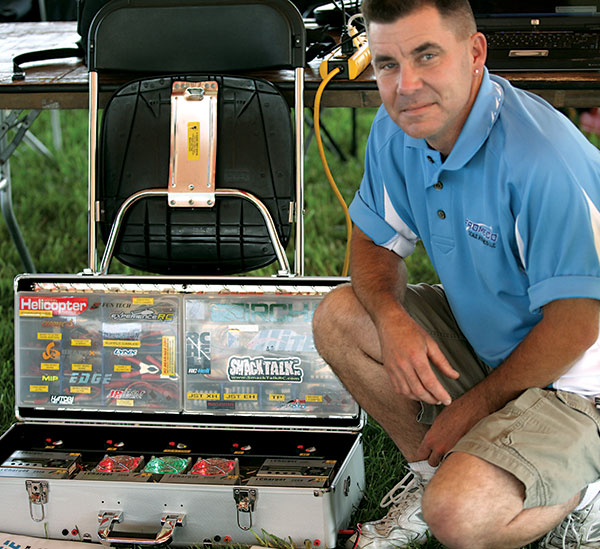
Blake shows off his charging box. He has six pro chargers that can charge 16 batteries at once. Some people might say that’s obsessive, but the author thinks it is fine!
There is no reason to quit practicing new moves as winter forces flying indoors. Some of today’s small models are 3-D capable— allowing small, indoor arenas to become aerobatic training grounds. Another benefit is smaller models are less stable. The reduced stability requires pilots to be more proficient, which translates to more precision with larger models. Small helicopters require pilots to stay focused. Learning new tricks with a heli can be frustrating because the pilot must relearn the move whenever orientation is changed. If a pilot is accustomed to doing Tic-Tocs with elevator control, then the same maneuver should be attempted using ailerons. The pilot should do the same with the helicopter facing the opposite direction. It’s difficult to master several orientations of the same maneuver. My friend, Jason Russell, offered some advice on small, electric helis and what pilots should watch for: “I see a lot of pilots jump ahead too quick in their flying. They see experts flying all the newest maneuvers and they want to do them also. This is dangerous because the heli might get into a position you are uncomfortable with and it could cause a crash.
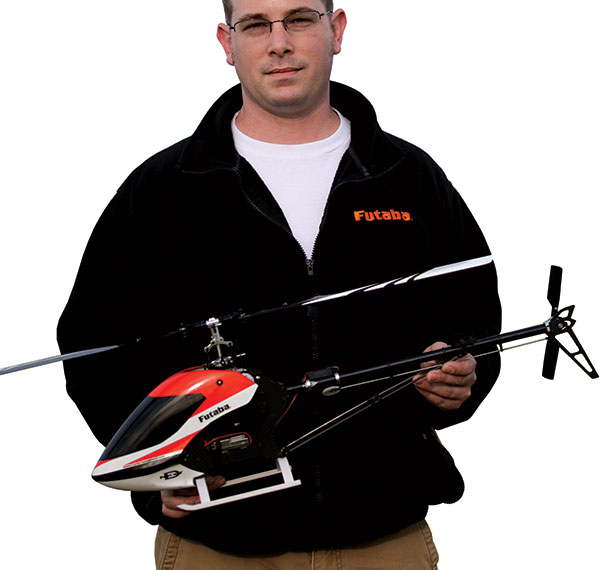
Active in indoor events, Jason Russell is knowledgeable about micro and miniature helis and a proponent of flybarless helis.
“Pirouetting flips is one of the biggest, most attractive tricks that newer pilots want to try. It looks so easy when an expert is flying this complicated move. A lot of times, pilots will try to get through the maneuver with timing the controls. It is really difficult to do a pirouette using timing. It may work a few times, but then you are going to get caught in a position not knowing what to do and the heli is going to crash. More people need to take a slower, more logical progression to their flying. “First of all, to do a pirouetting flip you must know how to do upright and inverted pirouettes while moving the heli around where you want it to go. This may sound a little simple, but try it. Most pilots have trouble just keeping the heli in one spot while pirouetting. So, it only makes common sense that if you can’t do that then you can’t begin to really learn a full-out pirouetting flip.” Thanks, Jason.
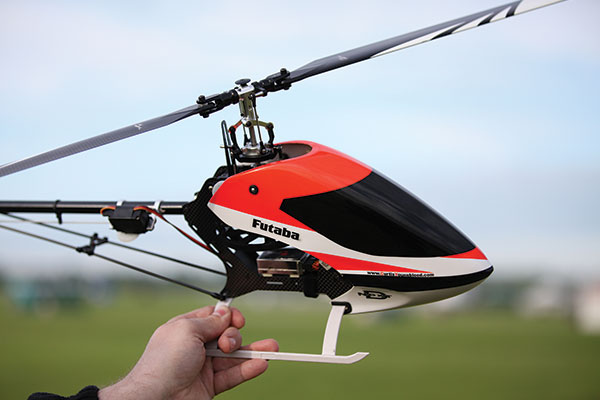
The Rave 450 from Curtis Youngblood was converted to flybarless control.
This advice is common among expert pilots. It takes a disciplined pilot to learn all the fundamentals and basic flight orientations before moving forward. To do the inverted and upright pirouettes, one needs to start with hovering with the nose pointed in each of the four directions. Move the nose 90° each time and hold the hover for at least 10 seconds at each spot. If some pilots were asked to do both upright and inverted, many would struggle to control the heli. Sometimes people fly the same basic flight routine so many times that their flying looks excellent. But if you ask them to break it down and do simple orientations, they can’t do it. This typically indicates that the pilot skipped a few important steps in his/her training, and then never went back and dealt with the orientation problems. Skipping ahead or building on a weak foundation is not a good idea. RC helicopters are no different. Having a good grasp of the basics pays dividends.
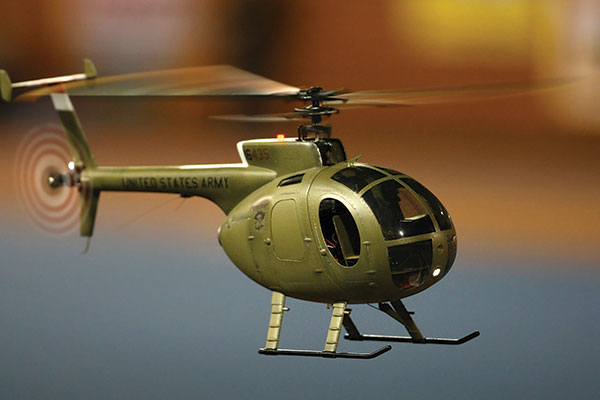
Another up-and-coming genre for micro helis is Scale. This is Michael Lissing’s tiny military helicopter competing during the 2010 E-Fest Indoor Electric Festival.
Get out there and get some flying done. Do not let the cold, wet weather of fall and winter discourage flying. Get a good, small, fully aerobatic heli and fly it this winter. Next spring you will be a new pilot at your flying field! That is all for now. -Mark Fadely










Add new comment